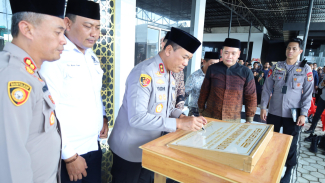Mummy Exhibition in Mexico May Infect Fungal Growth to Visitors
- Livescience
VIVA – Experts have warned that a preserved body that was accidentally mummified in the 1800s and is now on display in Mummy Exhibition, Mexico may have ‘fungal growths’ that could infect tourists.
"From some of the photos published in the media, it has been observed that at least one of the bodies shown...shows signs of the proliferation of a possible fungal colony," the Instituto Nacional de Antropologia e Historia (INAH) said in an official statement.
In addition to the possibility of fungal growth, experts also don't know for sure if the glass box where the mummy exhibit is completely airtight.
INAH admitted the exhibitors didn't consult before about handling, moving, and environmental conditions while at the exhibition site, "It is even more worrying that the mummies are still on display without public protection against biohazards," INAH stated.
Pemindaian mumi dengan Ct scan
- Daily Mail
As information, last week, the Tianguis Turistico 2023 exhibited six Guanajuato mummies dating back to the 1800s. The exhibition, which has the potential to cause a mold outbreak from the mummies, was held at the Palacio Mundo Imperial Hotel.
Mexican-style mummies are different from ancient Egyptian-style mummies. These bodies were mummified by accident. In 1833, a cholera outbreak took its toll so the bodies were buried to control the infection.
Then between 1870 and 1958, they were exhumed because Guanajuato imposed a tax on burials. As a result, some bodies that did not pay the tax were removed. The remains that were still in good condition were stored in a building.
In 1969, the building was converted into El Museo de las Momias (the mummy museum) where 59 mummies have been on display since 2007. Since then, the mummies have become a tourist attraction. In total, there are about 111 Guanajuato mummies. Some of them still have hair, rough skin, and clothing.
They have been preserved thanks to a combination of the local climate, mineral-rich soil, and in some cases partial embalming (a preservation procedure with certain less 'harsh' substances).
Before being exhibited for Tianguis Turistico 2023, these mummies had traveled mainly in 2009 to the United States. Moving mummies like this requires special procedures especially since there is a potential mold outbreak from the mummies.
"It is worrying and strange that an assessment of such remains was not carried out before the transfer," INAH said.



























